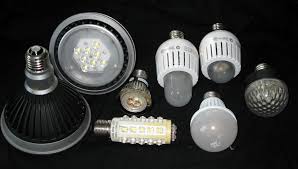Benefits Of LED Lighting For Dallas Homeowners
The benefits of LED Lighting are endless. LED Lights are energy efficient, cost effective, durable and more. They are the lastest technology in lighting and offer a great alternative in replacing your current halogen or standard lights. Below is a detailed list of some of the many benefits of LED Lighting.
Benefits Of LED Lighting.
BENEFITS OF LED LIGHTING
Efficiency
LEDs are extremely energy efficient and consume up to 90% less power than incandescent bulbs. Since LEDs use only a fraction of the energy of an incandescent light bulb there is a dramatic decrease in power costs. Also, money and energy are saved in maintenance and replacement costs due to the long LED lifespan.
Because of the low power usage of LEDs, they are becoming extremely popular for light sources in remote areas that use solar panels.
Although LEDs have a higher initial cost than incandescent and compact fluorescent light bulbs, the cost is quickly recouped over time in lower electricity costs.
Longevity
LEDs have a lifespan of up to 60,000 hours compared to 1,500 hours for incandescent bulbs. A LED light will last over 7 years (constant use) before needing replacement. On average, LED bulbs last 10 times as long as compact fluorescent bulbs, and 133 times longer than typical incandescent bulbs. Long lifespan of LEDs will dramatically reduce maintenance costs and lower long-term operating costs compared to traditional incandescent and fluorescent tubes.
Durability
LEDs are solid state lighting devices that utilize semiconductor material instead of a filament or neon gas. A LED light is a tiny chip encapsulated in an epoxy resin enclosure, which makes LEDs far sturdier than traditional incandescent light bulbs or fluorescent tubes. Since LEDs don’t use fragile components such as glass and filaments, LEDs are able to withstand shock, vibration, and extreme temperature.
Safety
Improved safety may be LED’s most important benefit
LED lights generate virtually no heat, therefore, they are cool to the touch and can be left on for hours without incident or consequence if touched. LED’s produce 3.4 BTU’s/hour, compared to 85 for incandescent bulbs. In comparison, incandescent lighting expels 90% of the energy it consumes via heat, making the bulbs hot to the touch. LEDs reduce the potential for safety risks such as burns and fires.
Environment
LEDs are made from nontoxic materials, unlike fluorescent lighting that uses mercury that may pose a danger to the environment. LED’s are also recyclable and considered “green” or Earth-Friendly.
Color
LED lights are offered in a variety of base colors such as Red, Green, Blue and Amber. Because traditional incandescent light bulbs use filters to produce colors, they are extremely inefficient. LEDS can be blended together to produce millions of color options.
Future
LEDs are poised to replace traditional incandescent light bulbs. LEDs are rapidly becoming the preferred lighting solution of both professionals and residential users. LED technology is continually advancing – producing brighter LED bulbs. The U.S. Department of Energy hopes to reduce the electricity used for lighting by 50% by converting to LED-based light sources.
Uses
LEDs are currently used for a wide variety of different applications such as residential lighting, aerospace industry, architectural, automotive, broadcasting, electronic instrumentation, entertainment and gaming, the military, traffic, and transportation. Since LEDs are focused lights they prove best at specific lighting tasks such as desk lamps, reading lights, night lights, security lights, spot lights, accent lights and lighting for signage.
The Health Benefits of LED Lighting
LEDs are also showing general health benefits for humans. An LED is made like other semiconductor products, with each diode being cut from a wafer of crystals layered over a base of silicon, sapphire, nitride, or some other material. The crystal layer on early LEDs was gallium arsenide or gallium phosphide, which produces a narrow band of red color. All other colors, such as green, blue, or amber, also depend on the semiconductor materials used to make the diode. Call (214) 238-8353 us for your home service and repair needs.
For more related articles and info visit https://www.berkeys.com/category/electrical/
